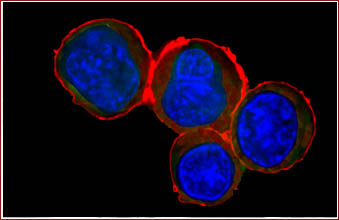|
Halobacterium

Halobacterium sp.
NRC-1 is an extremophile in the domain of Archaea. Extremophiles are
organisms that thrive in environments that are detrimental to the
majority of life on earth. In the case of the Halobacterium they grow
best in conditions of high salinity levels, between 3.8M and 4.3M. To
the human eye Halobacterium can be white, yellow, red, or purple,
depending on the gene that is being expressed and the environment it
exists in. These salt-loving, prokaryotic organisms grow best in
aerobic conditions and when exposed to sunlight.
In order to grow
anaerobically Halobacterium uses the protein Bacteriorhodopsin(BR) and
the presence of light in an alternate method of producing energy.
Through this method of creating energy, the membrane of the
Halobacterium turns purple. BR is the main component in this purple
membrane. When sunlight is present, BR creates a proton gradient by
moving protons out of the Halobacterium cell. The gradient is then used
by ATP synthase, another membrane protein, to generate chemical energy
in the form of ATP.
|